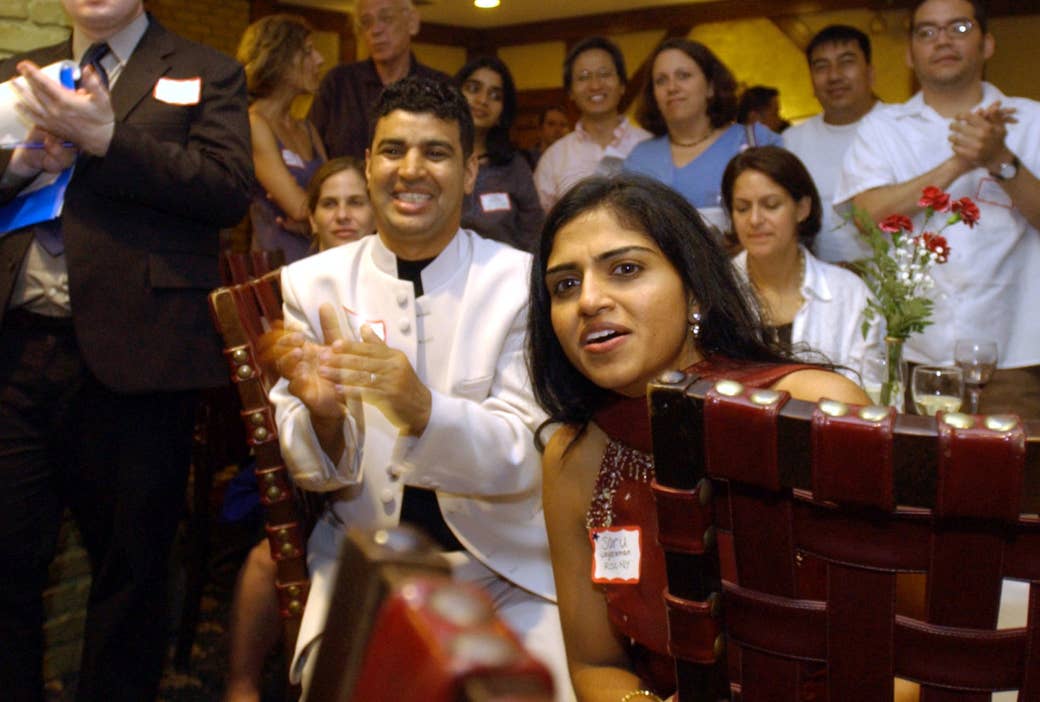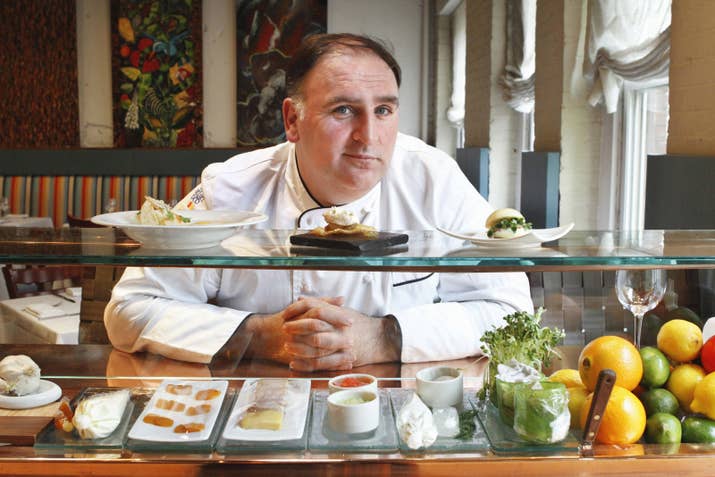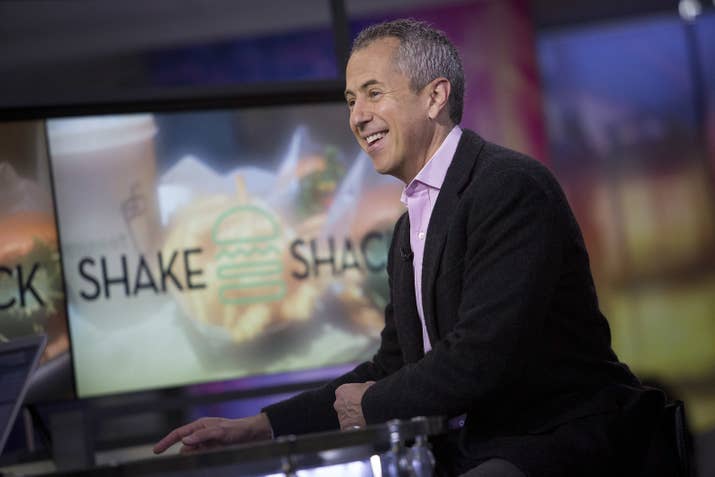In November 2016, voters in Maine gave workers a raise.
The referendum, approved by 55% of voters, will gradually bump the minimum wage from $7.50 to $12. And for the first time, restaurant workers who rely on tips for almost all of their income were included in the wage hike.
But even before a higher hourly wage fully took effect, Portland-based waiter Joshua Chaisson saw his take-home pay go down as customers, confused over whether they should tip, opted to leave less than the usual 20%. And other servers’ pay stubs showed the same, he said.
An experienced waiter, Chaisson had been earning on average $28 an hour, enough to provide him and his husband a middle-class life: an apartment in hip downtown Portland, savings for the future, money to spend on vacations and gifts for their nieces and nephews. But the new law threatened that, so last year, Chaisson found himself in a surprising position: supporting Republican legislators as they pushed to return to the old system, which allowed restaurants to pay servers and bartenders a fraction of the minimum wage if those workers made up the difference in tips.
But even before a higher hourly wage fully took effect, Portland-based waiter Joshua Chaisson saw his take-home pay go down as customers, confused over whether they should tip, opted to leave less than the usual 20%. And other servers’ pay stubs showed the same, he said.
An experienced waiter, Chaisson had been earning on average $28 an hour, enough to provide him and his husband a middle-class life: an apartment in hip downtown Portland, savings for the future, money to spend on vacations and gifts for their nieces and nephews. But the new law threatened that, so last year, Chaisson found himself in a surprising position: supporting Republican legislators as they pushed to return to the old system, which allowed restaurants to pay servers and bartenders a fraction of the minimum wage if those workers made up the difference in tips.

At a 15-hour public hearing, restaurant workers — including students, single mothers, and military vets — described how well the old system worked for them and their fears that higher labor costs could threaten their jobs. As lawmakers listened, the Republican bill, initially cast as a ploy by greedy restaurant owners to lower wages, drew bipartisan support.
“I am a very proud, very, very blue Democrat, and I made it clear that were this any other industry, were it ironworkers or plumbers or nurses ... we Democrats would listen to the workers of any given industry and have their backs,” said Chaisson. The bill passed, and nowadays for Chaisson, restaurant life is back to normal. But the experience convinced him there was a need for an organization to represent tipped workers in the face of a nationwide push to change the way many restaurant workers are paid.
“Were this any other industry, were it ironworkers or plumbers or nurses ... we Democrats would listen to the workers."
The Restaurant Workers of America was born, and on June 19 it faces its first critical test as voters in Washington, DC, decide on Initiative 77, which would raise hourly wages of tip-reliant workers. The group behind the initiative, Restaurant Opportunities Centers United, hopes the DC measure will prompt a nationwide wave, with the issue also up for decision in Michigan and New York later this year. Its campaign, dubbed One Fair Wage, wants to end the restaurant industry's ability to pay tipped workers a few dollars an hour, the norm in 43 states, and replace it with a guaranteed full minimum wage plus any tips workers earn.
ROC says the current system has its roots in restaurants’ exploitation of newly freed slaves after the Civil War, and it leaves too many tipped workers unable to make ends meet while forcing them to put up with harassing behavior to ensure higher gratuities. The group’s stated mission of improving restaurant employees' pay and working conditions has drawn the attention of Hollywood stars, Democratic lawmakers, and deep-pocketed donors.
But the One Fair Wage campaign has angered many of the people who ROC claims it wants to help and has been accused of using hot-button issues like race and #MeToo to win support.
“Apparently I’m a slave now?” Ryan Aston, a Washington, DC, bartender and Restaurant Workers of America board member, told BuzzFeed News. “I don’t understand how you could compare a vibrant, upwardly mobile, skilled craft position to the greatest atrocity in American history, but that’s their tactic.”

If Initiative 77 passes, DC servers and bartenders, who earn $3.33 an hour before tips, will see their hourly pay go up gradually until it hits $15 in 2026.
It’s a necessary pay hike, according to ROC, which says the country’s millions of restaurant workers earn a median income of $9 an hour, including their tips. Its argument resonated with Woong Chang, a server and bartender who moved to DC in 2009. At one interview, the restaurant hiring manager explained DC’s tipped minimum wage was then $2.77.
“I thought he was joking,” said Chang, who’d previously worked in the San Francisco Bay Area, where hourly wages were much higher. “It came to me as an unbelievable shock.” The manager laughed in his face when Chang said he hoped to make the same money he’d earned in California. Chang began volunteering with ROC soon after.
“I thought he was joking,” said Chang, who’d previously worked in the San Francisco Bay Area, where hourly wages were much higher. “It came to me as an unbelievable shock.” The manager laughed in his face when Chang said he hoped to make the same money he’d earned in California. Chang began volunteering with ROC soon after.
But ROC’s math doesn’t add up to Aston, who makes between $35 and $50 an hour at a trendy DC bar and restaurant. Ask just about any server or bartender in DC, he said, and they’ll say they’re doing well under the current system, which already requires employers to pay workers minimum wage if tips don’t come in. But that doesn’t seem to matter to ROC, he added.
“If you lie to someone’s face over and over again, if you come to their city where they are experts in their field and you tell them you know more than they do, that’s insulting,” he said.

Restaurant Opportunities Center had its beginnings in New York after 9/11, when server Fekkak Mamdouh and attorney Saru Jayaraman founded it to help thousands of displaced restaurant workers in the city, including those who like Mamdouh had worked at the World Trade Center’s Windows on the World restaurant.
Over the years, it’s taken on labor issues including discrimination, wage theft, and lack of paid sick leave. The group says it has 30,000 workers as members as well as 500 restaurant owners who have signed on to its stated mission to improve working conditions and wages.
“We’ve surveyed about 10,000 workers across America, and consistently, whatever region we’re in, the No. 1 issue that comes up that workers tell us is the No. 1 issue for them is the low wages,” Jayaraman, president of ROC United and director of the Food Labor Research Center at University of California, Berkeley, told BuzzFeed News.
Jayaraman has written widely about the history of tipping and the plight of restaurant workers, from an editorial in the New York Times titled “Why Tipping Is Wrong” to her 2016 book Forked: A New Standard for American Dining. The practice began in feudal Europe, she said, when servants were given something extra on top of their regular wage. When Americans brought the practice to the US after the Civil War, Jayaraman said it mutated into a way to avoid paying former slaves at all.
“You have a newly freed black workforce that the restaurant industry basically claimed, ‘Look, they’ve never been paid a wage before — why should we pay them a wage now?” Jayaraman said.
"I basically have to kiss them or please them or flirt with them to get the meal I need just to please the customer."
The practice was formalized in 1938, when the Fair Labor Standards Act set a federal minimum wage: 25 cents an hour, which didn’t apply to tipped workers. Over 80 years, that wage has risen to $7.25 an hour, though tipped workers may still be paid as little as $2.13, the minimum currently allowed under federal law.
It’s a system that particularly affects women, who hold around 70% of serving jobs. And most of them work for chains like IHOP, Denny’s, and Olive Garden, where meals are more affordable and tips, ultimately, are less. ROC’s review of federal data found tipped workers in states with a subminimum wage used food stamps 1.7 times more than the workforce at large.
And with servers’ incomes coming almost entirely from tips, they’re stuck tolerating inappropriate behavior — unwanted touching, sexual jokes, being told to expose their breasts — from customers, Jayaraman said. It’s not just customers who are a problem. Jayaraman said that because kitchen workers know servers depend on tips, they may use that against them. “We’ve heard so many stories from women in DC and around the country saying, ‘I’ve been harassed by kitchen staff that knows that because I rely on tips and I don’t get a full wage like they do that I basically have to kiss them or please them or flirt with them to get the meal I need just to please the customer,’” she said.

Trae Patton / NBCU Photo Bank via Getty Images
Amy Poehler and Saru Jayaraman at the Golden Globe Awards in January 2018.
Paying servers a wage would change those power dynamics, Jayaraman said, and it’s attracted supporters of the #MeToo movement to ROC’s cause. In January, Jayaraman attended the Golden Globes as the guest of actor Amy Poehler. That night, women of Hollywood made a powerful statement against sexual harassment and for their newly founded #TimesUp legal defense fund to help women across industries. Sixteen stars, including Sarah Jessica Parker, Reese Witherspoon, and Jane Fonda, went on to write a letter to New York Gov. Andrew Cuomo calling for tipped workers to make the full minimum wage.
But in response, a group of 500 New York workers signed a letter to the Hollywood women, saying they’d been misled. Restaurant Workers of America and their local counterparts have questioned the statistics cited by ROC. And while workers like Chaisson and Aston are happy to talk about problems in the restaurant industry, they say that doesn’t include their dependence on tips.The tip credit system has been on the line before in Washington, DC. In 2016, ROC was working to collect signatures for a ballot initiative that would gradually raise the minimum wage to $15 for all workers, do away with the lower minimum wage for tipped workers, and in the future tie the minimum wage to the consumer price index, a measure of inflation.
Restaurant owners balked: How would they come up with the extra wages? Some servers and bartenders, including Aston, voiced their fears on social media, among themselves, and in public meetings. If staffing cost restaurants more, would their hours be squeezed or jobs cut? Would customers continue to tip 20%, or just toss down a couple of bucks like they might to a barista?
Ultimately the DC council stepped in with legislation that raised the minimum wage to $15 by 2020. Tipped workers would still make less, but their hourly wage would rise to $5 by 2020. Both thereafter would be tied to the consumer price index, allowing for regular cost of living increases.
“I thought we were done — I thought we were fine,” Aston said. “I went back to bartending. I minded my own business.”
And DC’s restaurant scene was booming. Celebrity chefs had flocked to the district. The vast majority of restaurants were independently owned businesses, unlike the large casual chains frequently cited in ROC’s reports. In 2017, the Michelin Guide began awarding coveted stars to restaurants in the district. Federal statistics — considered unreliably low by some experts because of tipped workers’ tendency to underreport their earnings — show that as of May 2017, the average hourly wage for DC servers was $17.48, beating out every state except Hawaii. There were more jobs than there were qualified applicants.
"We’re willing to take a chance on somebody with no experience because the cost of hiring them is so low.”
And in a booming market, there’s a chance for employees to rise through the ranks, earning higher tips and finding more opportunity as they gain skills on the job, Aston said. That could change if owners were required to pay tipped employees more per hour, he said.
“[Right now] we’re willing to take a chance on somebody with no experience because the cost of hiring them is so low,” Aston said. “It’s a low-risk kind of thing.”
It’s a world that has been good to Aston, who grew up in the DC suburbs and started waiting tables there after high school. With a little experience under his belt, he moved into the city and into fine dining. He learned about the industry, learned about people, and built a career bartending.
Then came Initiative 77. Aston said that the initiative's language, which says it will increase the minimum wage for tipped employees, is misleading since everyone in DC is already guaranteed $15 an hour by 2020.
The Restaurant Association of Metropolitan DC, which represents owners, has come out against the initiative under the banner of Save Our Tips, a slogan that’s been showing up on restaurant windows around the city.

After talking with their tipped constituents, DC Mayor Muriel Bowser and most of the city council have publicly opposed Initiative 77. Chef José Andrés, known for his humanitarian work as well as operating some of the top bars and restaurants in the district, released a statement in opposition with his ThinkFoodGroup, which employs thousands of tipped workers.
It’s this support that makes Aston think he and his colleagues’ voices are being heard.
“But I’m still terrified of the prospect of people going to the box, getting confused by this poorly written initiative and crippling our business as a whole,” Aston said. “Crippling our livelihood.”Simone Barron, a server in Seattle and a Restaurant Workers of America board member, said she’s seen what can happen when tipped workers are tied into broader minimum wage increases. Washington is one of seven states in the US that has long paid tipped workers the full minimum wage. That worked fine, Barron said, until Seattle hiked its minimum pay, approaching $15 an hour.
“I’m not going to say it’s bad for all workers,” she said. “We see people who work in counter service or McDonald’s, things like that — they do need a raise. But for us, we already make far more than minimum wage. We don’t need the raise.”
Simone Barron
Courtesy of Simone Barron
Simone Barron
Barron said she’s generally made between $25 and $35 an hour as a casual fine dining server. But since the minimum wage increases in Seattle, her restaurant has switched to a service charge model. The restaurant adds a 20% charge to each bill, which belongs to the house. Barron, as an experienced server, receives 14% of whatever her sales are plus $13.50 an hour. It ends up getting her about $20 to $30 less per day, she said. A junior server would receive $13.50 an hour plus 10% of their sales.
Voters and unions that backed the minimum wage increase meant to benefit workers in retail or coffee shops — not full-service restaurants, which are now paying the price of legislation that wasn’t tailored to their industry, Barron said.
“You can’t hurt one group of workers to protect another group. It just doesn’t make sense,” she said. “If you stand up for working people, then stand up for all of us.”
Working in restaurants allowed her mother, an immigrant raising Barron and her brother alone, to provide for their family. When Barron finished college, she wanted to become an actor. Serving gave her financial independence, plus the flexibility to make classes or auditions.
“You can’t hurt one group of workers to protect another group. It just doesn’t make sense.”
She wants today’s young women to find those same opportunities, and she disputes what she describes as ROC’s narrative: that women in restaurants are victims.
“It’s not to say there isn’t sexual harassment in the industry. But there’s sexual harassment everywhere,” she said. “To say women in the industry use their bodies to garner tips, that is so demeaning.”
The blame also shouldn’t fall on the fact that a woman is working for tips, she said.
“To me that’s almost victim blaming,” she said. “That takes the blame away from the perpetrator, the person that’s really to blame, and puts it on the wage or on the person working it.”
For Barron and Restaurant Workers of America, there are workplace issues they’d like to see get attention from industry leaders and labor advocates: more sexual harassment training, plus reporting systems where workers can more easily get recourse against managers or coworkers who are abusing their power. Benefits, like 401(k)s and health care, should be available so servers and bartenders can make their jobs into a career.
“If we could get past this tip credit malarkey, we could talk about the things that we would like,” Aston said.Restaurant pay can be unacceptably low for cooks and dishwashers, ROC and Restaurant Workers of America agree. But with tips taken into account, servers are comparably wealthy, restaurant owners have said. Chang, the pro-77 server, said he recognizes opponents probably are making good money on tips alone. “The truth is this initiative is not necessarily for them or even for people like me,” he said. “I’ve been lucky and privileged enough to move forward, but I also know a lot of people for one reason or another are not as lucky. And this is for them.”
Disparity between front- and back-of-house workers — who are more likely to be immigrants and people of color — has prompted some restaurant owners to end tipping altogether. New York restaurateur Danny Meyer in 2015 got rid of gratuities in his Union Square Hospitality Group, offering instead higher wages and benefits.

Meyer said earlier this year that the move caused 30–40% of his longtime tipped workers to leave, citing a hit to their earnings. Meyer remained optimistic that long term, abandoning tipping would be good for everyone. According to Grubstreet, cooks saw their wages rise by around $2 an hour. Servers said their pay dropped about $100 a week, with one front-of-house worker at Union Square Café reporting her earnings dropped from $60,000 a year to $50,000.
The California Restaurant Association, whose members say they’re struggling to adapt as the minimum wage approaches $15 an hour, is thinking about a new model that may be a compromise, said Sharokina Shams, an association spokesperson. Employers could guarantee servers a wage higher than minimum — say $18 or $20 an hour — but tips could be credited toward that base income.
“It’s guaranteeing them something more but it’s also taking tips into account, which I think would help the restaurant spread the wealth to the back-of the-house worker,” Shams said.
Thinking about the future of the business in DC is what pushed Aston into activism. He’s found himself doing public speaking, organizing events, and even writing an editorial in the Washington Post.
“That has not been easy,” he said. “I’m a bartender: I do hospitality. I make drinks; I make jokes.”
But seeing the number of his fellow bartenders and servers join him in opposing the initiative has made it worthwhile. The community is behind him, he said.
“I just wish people would listen to us,” he said. “We keep screaming from the rooftops, ‘Please don’t help!’”
If Initiative 77 passes, Aston fears the vibrant DC food and beverage industry will dissipate. Outside the 10-mile by 10-mile district, the cost of doing business may be less. And when he’s ready to open a bar of his own, he worries he’ll have to go to Virginia or Maryland. It would be ROC’s fault, he said.
“If they drive me from my home,” he said, “I will never forgive them.” ●

No comments:
Post a Comment